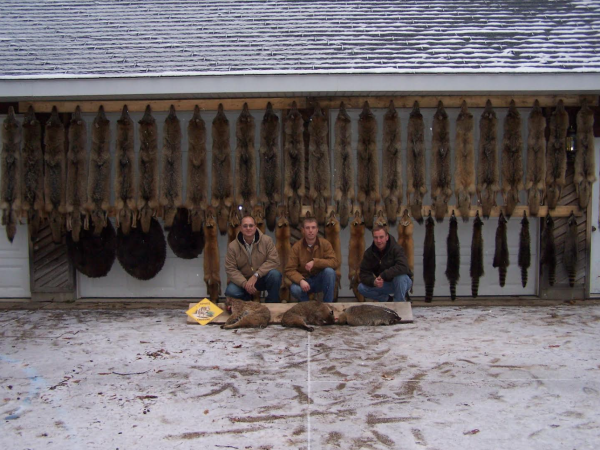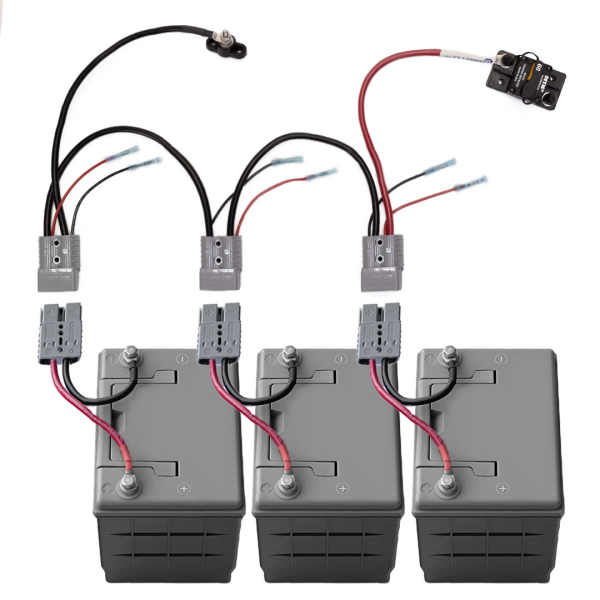Editor’s Note: This is an excerpt from a longer article that was first seen by QDMA members in Quality Whitetails magazine. To start receiving our magazine, become a member of QDMA today.
On a crisp, clear November night at deer camp, the conversation around the campfire subsides for a moment as you add another log to the fire. Just as you ease back into your camp chair, the silence is broken by a long mournful howl. Its maker is soon joined by what sounds like a dozen other coyotes, each making their own yips, barks and howls.
This scenario, once unusual or even rare across much of the eastern United States, has now become common. As deer hunters, it’s natural for us to want to do something about it.
Given our current knowledge of coyote predation on deer, when is coyote control justified? The answer depends on where your current management program is in relation to the Four Cornerstones of QDM.
Herd Monitoring
Often, the initial reason we want to remove coyotes from places we hunt is purely the product of a logical chain formed in our mind. We know coyotes kill deer, thus more coyotes kill a greater number of deer, and therefore decreasing the number of coyotes will result in more deer. However, we often go through this thought process without determining if the fact that coyotes are killing deer on our property is really a problem. Enter data collection.
The results of recent coyote research agree that coyotes can affect deer populations through fawn predation, although the magnitude of the effect differs from one location to another. Thus, estimating the recruitment rate (the number of fawns surviving to 6 months of age per adult doe) where you hunt is the most important first step to determine if you have a coyote problem. Here are three effective ways to measure fawn recruitment where you hunt.
Another important piece of information gathered through herd monitoring is the number of deer per square mile. Once you have this information in hand, a call to a game biologist in your area should tell you if your deer herd is above, below or on par with what’s normal for that area. However, many quality managed properties are capable of supporting larger than average deer populations.
Habitat/Herd Management
“When you hear hoofbeats behind you, don’t expect to see a zebra.”
Will stole this saying from his wife, who learned it in medical school. Healthcare providers always rule out the most common causes of an illness before moving on to the more unusual ones. The same applies to deer management. If herd monitoring indicates that fawn recruitment or deer density are abnormally low, the first step is to rule out poor habitat quality as the potential cause.
The easiest way to evaluate the quality of your habitat is with the help of your local state agency biologist. He or she should also be able to give you a general idea of where your deer herd stands in relation to the carrying capacity of the land by observing browsing pressure on plants preferred by deer in your area. If this process reveals that deer densities are at or above carrying capacity, read no further. Before coyote control is even considered, this issue must be resolved either by reducing deer numbers through increased harvest, or by improving habitat quality. However, if the numbers don’t add up given the quality and quantity of available forage, read on.
Hunter Management
You’ve determined the size of your deer herd, the number of fawns recruited each year, and the current status of your property’s habitat. Next comes the most difficult aspect of managing deer – managing hunters and their expectations. There are two general scenarios we encounter when dealing with hunter management issues. Ironically, they are polar opposites. In the first scenario, hunters want to harvest more than is the sustainable number of deer on a given property each year. This may be the result of their having become accustomed to years of hunting in the absence of predation. The other scenario is where hunters struggle to achieve adequate annual doe harvest.
If you fall into the latter category, again, read no further. Implementing coyote control on a property where hunters struggle to keep the population in check is simply adding fuel to a fire. If, however, you are a member of the former category, and all other aspects of your deer management plan are in place, only two options will prevent a steady decline in deer numbers. One is to redefine hunter expectations and reduce the annual doe harvest. The other is to implement coyote control, thereby increasing recruitment and thus the sustainable annual harvest.
The Cost of Coyote Removal
If you’ve carefully considered every aspect of your deer management program and determined that coyote control is worth considering, the obvious question becomes “How much will it cost?” The answer depends on the size of the property, the duration of the removal effort, and who conducts the trapping. Hiring a professional trapper to work a large property (1,000 or more acres) will likely cost you $100 to $200 per day. Most recommend a two-week minimum duration.
Those with smaller properties may be able to locate a trapper who is already running traps nearby. They may be willing to set a few traps on your property at a reduced cost. Another option is to try and find an experienced hobby trapper. Simply offering your land to them as a place to trap might be payment enough.
However, trapping coyotes, especially on small tracts of land, results in only a temporary decline in coyote numbers. Emerging data indicate that eastern coyotes can be highly mobile. Residents, who are usually older and more dominant individuals, maintain territories while younger transients may bounce from one area to another looking to establish their own territories. As soon as a territory is vacated (on your property for example), it quickly becomes occupied by a new individual. Therefore, to be most effective, coyote removal should be conducted every year.
This ability to recolonize an area quickly has important implications for the timing of trapping. Short-duration efforts should be focused just before and during fawn drop so that coyote numbers are lowest when fawns are most vulnerable. Where legal, some trappers may be unwilling to trap during spring and summer without payment because it is often more difficult and pelts are past their prime.
Perhaps the least expensive and most rewarding option is to do it yourself. Starting from scratch, the necessary equipment to cover 1,000 acres or less can be purchased for under $500. While an extremely rewarding experience, obtaining knowledge to become an effective trapper is not easy. Coyotes are difficult to trap. However, the plethora of trapping instruction now available on the Internet, including videos on websites like YouTube, has greatly shortened the learning curve for new trappers. If you decide to go this route, be prepared to invest a great deal of time. Most states have 24-hour trap check laws so every trap must be visited on a daily basis. Many hunter/managers do not live close enough to their properties for this to be a viable option. If your situation permits you to go this route, however, be prepared to discover a new outdoor addiction!
Learn what a trapping instructor believes are the top-5 rookie trapping mistakes.
Conclusion
Determining the direct effects of coyotes on deer populations is difficult. This is why it is more important now than ever for deer managers to use proven techniques, such as trail-camera surveys, for determining herd size and recruitment rates. This information will allow you to determine if your current recruitment rates are on par with history or have declined in response to coyote predation.
If these comparisons show significant decreases in recruitment, consider your habitat first. Remember that nothing in nature is static. If you’ve done nothing to maintain deer habitat on your property in recent years, it may be that the amount of high-quality habitat on your property has declined.
If, however, you’ve given due diligence to habitat management, the size of your deer herd is in balance with the habitat, and herd monitoring indicates that recruitment rates are lower than expected, only two options remain. You must either lower annual harvest numbers or increase fawn recruitment using coyote control. Keep in mind, however, that removing coyotes is not guaranteed to increase fawn recruitment. The relationship between deer and coyotes is very dynamic and, as our own research suggests, even several months of professional trapping was not sufficient to increase fawn recruitment on one of our study sites.
Each new study improves on our knowledge surrounding the impacts of coyotes on deer in Eastern states, but also generates more questions that demand answers. The one thing for certain is that coyotes are here to stay and, thus, we must learn to incorporate their effects into our deer management programs. Although new challenges in Quality Deer Management, such as coyote predation, will continue to arise, it is important to remember that the solutions always lie within the context of the original Four Cornerstones of QDM. Reliance on these principles will always ensure the future of deer and deer hunting.
About the Authors
Dr. Will Gulsby is a post-doctoral research associate with the University of Georgia Deer Lab and the Georgia DNR Wildlife Resources Division. His research focused on the impacts of coyotes on fawn ?recruitment. He is also a QDMA member and enjoys hunting, trapping, and assisting landowners in improving their deer habitat and hunting experiences.
Dr. Karl V. Miller is a professor of wildlife ecology and management at the University of Georgia and a Charter Life Member of QDMA. He is a previous winner of QDMA’s Joe Hamilton Lifetime Achievement Award as well as QDMA’s Al Brothers Professional Deer Manager of the Year Award.
Coyote/fawn photo by QDMA member Troy Huff of Alabama.







